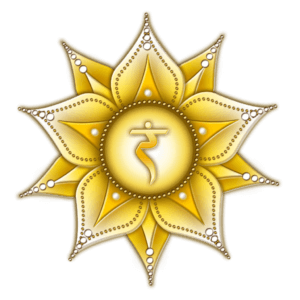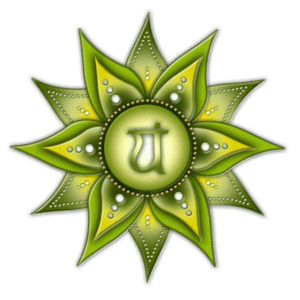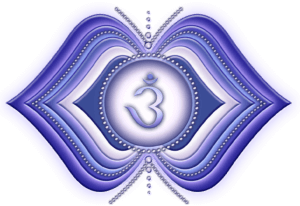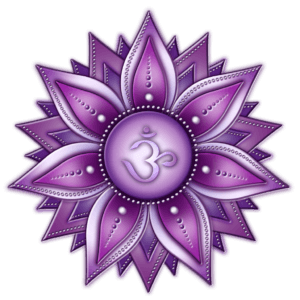Home » Yoga Blog » Chakra Blog » The 7 Chakras and Their Meaning – Beginner’s Guide
What are the 7 Chakras and Their Meaning?
Many of us understand the Chakras as energy centers in the human body playing a vital role in our physical, mental, and spiritual well-being. But you may be asking, what do the 7 chakras really mean? Where are they located and what about the chakra colors? And can this be shown on a 7 chakras chart?
To start, each of the 7 chakras live on a specific area of the body and serve a function along the spinal column. The chakras process and distribute life force energy (prana or qi) throughout the body.
When the chakras are balanced and open, energy flows freely, we experience good health, vitality, and well-being. However, when the chakras become blocked or imbalanced, it can lead to physical, emotional, and spiritual problems that require Chaka Healing. Chakra healing methods can include meditation, visualization, yoga asana and energy work to help balance and align the chakras.
The 7 Chakras Location and Color Chart
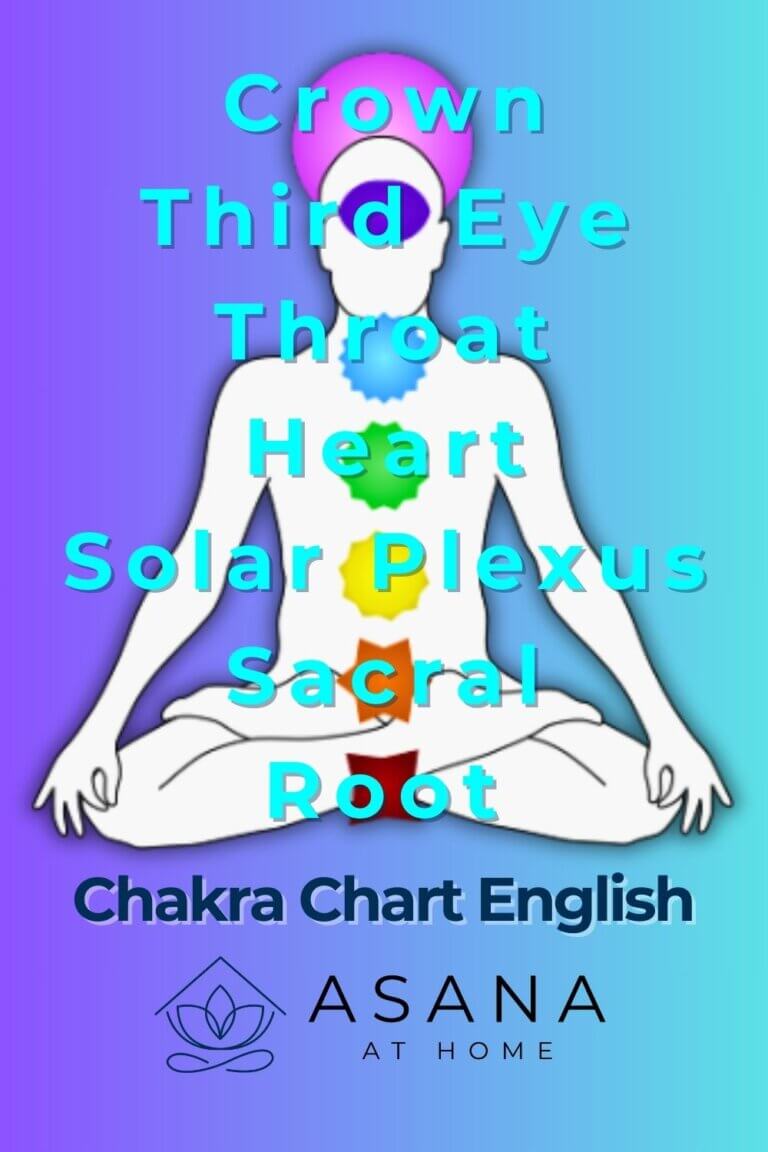

Lets start our Exploration of the the Chakras by going through The 7 Chakras Chart, meaning, locations and colors.
From base of the spine to the top of the head.
- Red – Root Chakra, Muladhara
- Orange – Sacral Chakra, Svadhishthana
- Yellow -Solar Plexus Chakra, Manipura
- Green – Heart Chakra, Anahata
- Blue – Throat Chakra, Vishuddha
- Indigo or Dark Purple – Third Eye Chakra, Ajna
- Purple – Crown Chakra, Sahasrara
the 7 Chakras Meaning and Colors
“Chakra” or “Cakra” (a variant spelling) is a word in Sanskrit, an ancient Indian language, that means “wheel” or “cycle.” In many Eastern and spiritual belief systems, chakras are seen as spinning wheels or circles through which life energy flows. When your chakras are in balance, life energy can move through them and connect you to the world around you.
Further the chakra energy centers have a unique frequency, and a color corresponding to this. For example, the root chakra has the lowest frequency and is associated with red. In contrast, the crown chakra has the highest frequency and is associated with the color purple or white. Many discover that the colors help them connect to the chakras and their unique capabilities.
What you may find intersting is that the colors of the chakra system adhere to the colors of the rainbow.
The Study of the 7 Chakras
The study of 7 chakras meaning is a diverse and multi-faceted field that encompasses many practices and disciplines. It includes the study of Eastern philosophies and spiritual traditions such as Hinduism and Buddhism, as well as incorporating Western psychological and physiological concepts.
In addition, the study of 7 chakras involves exploring the nature and function of the chakras and techniques for balancing and aligning them. Some practitioners incorporate crystals, sound therapy, and other modalities in their chakra work.
The 7 Charkas Explained - Contents
1st of 7 Root Chakra Meaning - Muladhara
The first of 7 Chakras – Root chakra (Muladhara), is the foundational energy center in the human chakra system.
As shown in the 7 chakras chart, it’s situated at the base of the spine. Muladhara acts as a vital anchor for our physical, emotional, and spiritual well-being.
The root chakra is our sense of security, stability, and connection to the earth, crucial in nurturing our feelings of groundedness and self-assurance.
Represented by the color red, the root chakra symbolizes power, life force, and vitality. This energy center governs our survival instincts, encompassing basic needs such as sustenance, shelter, and safety. In addition, a balanced root chakra fosters a sense of belonging, confidence, and the ability to confront life’s adversities with resilience and determination.
On the other hand, an imbalanced root chakra can lead to feelings of anxiety, insecurity, and detachment from the world around us. These imbalances may manifest as physical issues, such as lower back pain or problems with the legs and feet, as well as emotional challenges like fear, anger, and a lack of trust.
It is vital to engage in grounding practices to cultivate a healthy and harmonious root chakra. These may include spending time in nature, engaging in physical activities like yoga or walking, and connecting with the earth’s energy through meditation or visualization techniques. Additionally, focusing on our basic needs and establishing a stable environment can support the balance of the root chakra.
By consistently balancing the root chakra, we can develop a sense of stability, inner strength, and a profound connection to our physical environment, laying the groundwork for overall well-being and harmony.
Learn More
Still Curious? Check out our Blog Post Root Chakra Meaning and Heaing Guide
2nd of 7 Sacral Chakra Meaning - Svadhishthana
The second of the 7 Chakras – Sacral chakra (Svadhishthana) is the second energy center in the human chakra system. As shown in the 7 chakras chart, it is positioned just below the navel, near the lower abdomen and sexual organs.
Svadhishthana is a vital source of our emotional well-being, creativity, and sensuality. The sacral chakra is associated with the color orange, symbolizing warmth, passion, and the joy of life.
This energy center governs our ability to form and maintain healthy relationships, express our emotions freely, and embrace our sexuality. A balanced sacral chakra promotes self-confidence, emotional harmony, and the ability to experience pleasure and joy in various aspects of our lives. It also nurtures our creative energy, allowing us to tap into our innate talents and abilities.
Conversely, an imbalanced sacral chakra can result in emotional instability, suppressed feelings, and a lack of creativity. These imbalances may manifest as physical issues, such as reproductive or urinary system problems, and emotional challenges, like guilt, shame, or an inability to form deep connections with others.
Engaging in practices that nurture our emotional and creative selves is essential to fostering a healthy and harmonious sacral chakra. These may include exploring various forms of artistic expression and engaging in physical activities that connect us to our bodies (such as dance or yoga).
We are additionally, developing a deeper understanding of our emotions through mindfulness and self-reflection. Building healthy relationships and establishing emotional boundaries can also support the sacral chakra balance.
By consistently balancing the sacral chakra, we can cultivate a sense of emotional harmony, an inner passion, and a profound connection to our creative and sensual nature, paving the way for overall well-being and fulfillment.
Learn More
Still Curious? Check out our Blog Post Sacral Chakra Awakening Symptoms.
3rd of 7 Solar Plexus Chakra Meaning - Manipura
The third of 7 Chakras – Solar plexus chakra (Manipura) is the third energy center in the human chakra system. Looking at the 7 chakras chart, its located around the navel area.
Manipura is a vital source of personal power, self-esteem, and motivation. The solar plexus chakra is associated with the color yellow, symbolizing energy, confidence, and the sun’s radiance.
This energy center governs our sense of identity, determination, and ability to act. A balanced solar plexus chakra promotes self-confidence, emotional stability, and a strong sense of purpose. It also nurtures our inner drive, allowing us to set goals and achieve them with conviction and perseverance.
On the other hand, an imbalanced solar plexus chakra can lead to low self-esteem, indecisiveness, and a lack of motivation. These imbalances may manifest as physical issues, such as digestive system problems, and emotional challenges, like insecurity, jealousy, or a need for control.
Engaging in practices that nurture our sense of self and personal power is essential to cultivating a healthy and harmonious solar plexus chakra. These may include setting achievable goals, engaging in activities that build self-confidence, and practicing positive affirmations or visualization techniques.
Additionally, focusing on self-awareness, personal growth, and developing a strong sense of purpose can support the balance of the solar plexus chakra.
By consistently balancing the solar plexus chakra, we can foster a sense of inner strength, self-assurance, and a profound connection to our personal power, paving the way for overall well-being and success.
Learn More
Still Curious? Check out our Blog Post Yellow Chakra Meaning and Colour.
You Love Yoga, We Love Yoga—Let’s Stay Connected
Get yoga tips, a little inspiration, and friendly emails—because yoga is better with friends.
4th of 7 Heart Chakra Meaning - Anahata
The fourth of 7 Charkas – Heart chakra (Anahata) is the fourth energy center in the human chakra system. Looking at the 7 chakras chart, it is positioned at the center of the chest.
Anahata serves as a vital source of love, compassion, and emotional balance. In addition, the heart chakra is associated with the color green, symbolizing growth, healing, and the nurturing energy of nature.
This energy center governs our ability to give and receive love, form deep connections with others, and cultivate empathy and compassion. A balanced heart chakra promotes emotional harmony, self-love, and strong inner peace. It also nurtures our capacity to forgive ourselves and others, allowing us to heal and move forward.
Conversely, an imbalanced heart chakra can lead to feelings of emotional instability, detachment, and difficulty in forming or maintaining relationships. These imbalances may manifest as physical issues, such as heart, lung, or circulatory system problems, as well as emotional challenges, like jealousy, bitterness, or an inability to forgive.
Engaging in practices that nurture love, compassion, and emotional balance is essential to foster a healthy and harmonious heart chakra. These include developing self-care routines, practicing Heart Chakra Mantas, and cultivating gratitude and forgiveness daily.
In addition, building healthy relationships, setting emotional boundaries, and embracing vulnerability can also support the balance of the heart chakra.
By consistently balancing the heart chakra, we can cultivate a sense of emotional harmony, deep love, and a profound connection to our compassionate nature, paving the way for overall well-being and fulfillment.
Learn More
Still Curious? Check out our Blog Post Green Heart Chakra Meaning and Healing
5th of 7 Throat Chakra Meaning - Vishuddha
The fifth of 7 Chakras – Throat chakra (Vishuddha), is the fifth energy center in the human chakra system. As shown in the 7 chakras chart, it is located in the throat area.
Vishuddha is vital for communication, self-expression, and truth. In addition, the throat chakra is associated with the color blue, symbolizing clarity, calmness, and the soothing energy of water.
This energy center governs our ability to express ourselves openly and honestly, verbally and non-verbally. A balanced throat chakra promotes clear communication, active listening, and the ability to speak our truth with confidence and authenticity. It also nurtures our capacity to express our creativity and individuality in various aspects of our lives.
Conversely, an imbalanced throat chakra can lead to difficulties in communication, feelings of being misunderstood, or fear of self-expression. These imbalances may manifest as physical issues, such as throat, thyroid, or ear problems, as well as emotional challenges, like shyness, social anxiety, or a tendency to be dishonest.
To foster a healthy and harmonious throat chakra, engaging in practices that nurture communication, self-expression, and truth is essential. These may include journaling, practicing mindful speech, and exploring various forms of creative expression. Creative expression, such as writing, painting, or singing.
Additionally, focusing on active listening, developing empathy, and cultivating a strong sense of personal integrity can support the balance of the throat chakra.
By consistently balancing the throat chakra, we can cultivate a sense of clear communication, authentic self-expression, and a profound connection to our truth, paving the way for overall well-being and fulfillment.
Learn More
Still Curious? Check out our Blog Post on Blue Throat Chakra Meaning
6th of 7 Third Eye Chakra Meaning - Ajna
The sixth of 7 Chakras – Third eye chakra (Ajna) is the sixth energy center in the human chakra system. By referring to the 7 chakras chart, you will find it’s location at the center of the forehead, slightly above the space between the eyebrows.
Anja is a vital source of intuition, insight, and inner wisdom. The third eye chakra is associated with the color indigo, symbolizing intuition, deep understanding, and the expansive energy of the night sky.
This energy center governs our ability to perceive the subtle energies and connections within ourselves and the world around us. A balanced third eye chakra promotes heightened intuition, mental clarity, and access to our inner wisdom. It also nurtures our capacity for spiritual growth and self-awareness, allowing us to explore our consciousness and the deeper aspects of our existence.
Conversely, an imbalanced third eye chakra can lead to difficulties in decision-making, confusion, or a lack of trust in our intuition. These imbalances may manifest as physical issues, such as headaches, vision problems, sinus issues, and emotional challenges, like skepticism, cynicism, or an inability to focus.
To foster a healthy and harmonious third eye chakra, engaging in practices that nurture intuition, insight, and inner wisdom is essential. These may include meditation, mindfulness exercises, and exploring various forms of spiritual practice, such as yoga, energy healing, or studying sacred texts. Additionally, focusing on developing self-awareness, embracing stillness, and cultivating a strong sense of inner trust can support the balance of the third eye chakra.
By consistently balancing the third eye chakra, we can cultivate a sense of heightened intuition, mental clarity, and a profound connection to our inner wisdom, paving the way for overall well-being and spiritual growth.
Learn More
Still Curious? Check out our Blog Post on Blocked Third Eye Chakra Symptoms
7th of 7 Crown Chakra Meaning - Sahasrara
The last of the 7 Chakras – Crown chakra (Sahasrara) is the seventh and highest energy center in the human chakra system. As shown in the 7 chakras chart it’s location is at the top of the head.
Sahasrara is a vital source of spiritual connection, enlightenment, and unity with the universe. The crown chakra is associated with the color violet or white, symbolizing divine consciousness, purity, and the infinite energy of the cosmos.
This energy center governs our ability to connect with the divine, access higher states of consciousness, and experience a sense of oneness with all creation. A balanced crown chakra promotes spiritual growth, inner peace, and the ability to experience deep states of meditation and connection with our true selves. It also nurtures our capacity for selflessness, altruism, and the recognition that we are part of something greater than ourselves.
Conversely, an imbalanced crown chakra can lead to feelings of disconnection, spiritual apathy, or a sense of being lost or ungrounded. These imbalances may manifest as physical issues, such as headaches, insomnia, or neurological disorders, as well as emotional challenges, like depression, close-mindedness, or an inability to find meaning in life.
To foster a healthy and harmonious crown chakra, engaging in practices that nurture spiritual connection, enlightenment, and unity with the universe is essential. These may include meditation, prayer, contemplation, and exploring various forms of spiritual practice, such as energy healing, chanting, or studying sacred texts. Additionally, focusing on developing humility, gratitude, and an appreciation for the interconnectedness of all things can support the balance of the crown chakra.
By consistently balancing the crown chakra, we can cultivate a sense of spiritual connection, inner peace, and a profound understanding of our place in the universe, paving the way for overall well-being and enlightenment.
Learn More
Still Curious? Check out our Blog Post on The Purple Chakra Meaning And Colors
Summing Up the 7 Chakras
The 7 chakras play a vital role in our physical, mental, and spiritual well-being. Practicing chakra healing techniques such as meditation, visualization, yoga poses and energy work can help balance and align our chakras to allow energy to flow freely and achieve optimal health and well-being. Taking care of our 7 chakras is essential to holistic self-care and can improve the overall quality of life.
Source Wikipedia Chakra


